Related Research Articles
Electoral systems of the Australian states and territories are broadly similar to the electoral system used in federal elections in Australia.
The parliaments of the Australian states and territories are legislative bodies within the federal framework of the Commonwealth of Australia.

The Victorian Legislative Council (VLC) is the upper house of the bicameral Parliament of Victoria, Australia, the lower house being the Legislative Assembly. Both houses sit at Parliament House in Spring Street, Melbourne. The Legislative Council serves as a house of review, in a similar fashion to its federal counterpart, the Australian Senate. Although, it is possible for legislation to be first introduced in the Council, most bills receive their first hearing in the Legislative Assembly.
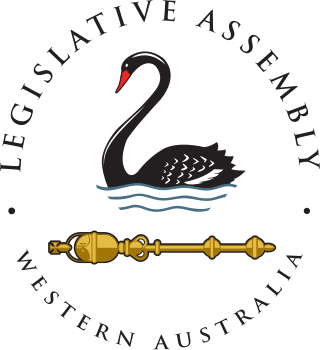
The Western Australian Legislative Assembly, or lower house, is one of the two chambers of the Parliament of Western Australia, an Australian state. The Parliament sits in Parliament House in the Western Australian capital, Perth.
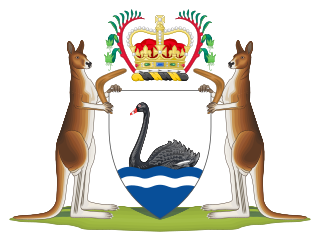
The Parliament of Western Australia is the bicameral legislature of the Australian state of Western Australia, forming the legislative branch of the Government of Western Australia. The parliament consists of a lower house, the Legislative Assembly, an upper house, the Legislative Council and the King, represented by the Governor of Western Australia. The two Houses of Parliament sit in Parliament House in the state capital, Perth.
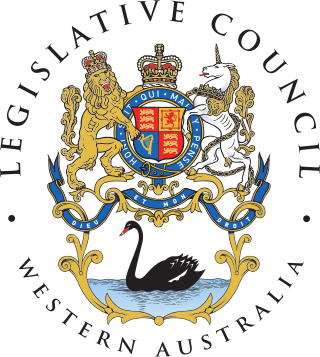
The Western Australian Legislative Council is the upper house of the Parliament of Western Australia, a state of Australia. It is regarded as a house of review for legislation passed by the Legislative Assembly, the lower house. The two Houses of Parliament sit in Parliament House in the state capital, Perth.
The lower houses of the parliaments of the states and territories of Australia are divided into electoral districts. Most electoral districts send a single member to a state or territory's parliament using the preferential method of voting. The area of a state electoral district is dependent upon the Electoral Acts in the various states and vary in area between them. At present, there are 409 state electoral districts in Australia.

Elections were held in the state of Western Australia on 10 February 2001 to elect all 57 members to the Legislative Assembly and all 34 members to the Legislative Council. The two-term Liberal–National coalition government, led by Premier Richard Court, was defeated by the Labor Party, led by Opposition Leader Dr Geoff Gallop, in a landslide.
A political family of Australia is a family in which multiple members are involved in Australian politics, particularly electoral politics. Members may be related by blood or marriage; often several generations or multiple siblings may be involved.
Beeloo was an electoral district of the Legislative Assembly in the Australian state of Western Australia from 1956 to 1968. Beeloo was named after the Beeloo, a subgroup of the Whadjuk Nyungar people, who inhabited an area that later became the south eastern suburbs of Perth, south of the Swan and east of the Canning, prior to European settlement.
This is a list of members of the Western Australian Legislative Council from 22 May 1954 to 21 May 1956. The chamber had 30 seats made up of ten provinces each electing three members, on a system of rotation whereby one-third of the members would retire at each biennial election.
This is a list of members of the Western Australian Legislative Council from 22 May 1956 to 21 May 1958. The chamber had 30 seats made up of ten provinces each electing three members, on a system of rotation whereby one-third of the members would retire at each biennial election.
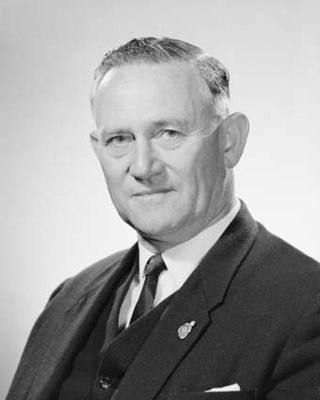
Elections were held in the state of Western Australia on 20 February 1965 to elect all 50 members to the Legislative Assembly and 15 members to the 30-seat Legislative Council. The Liberal-Country coalition government, led by Premier Sir David Brand, won a third term in office against the Labor Party, led by Opposition Leader Albert Hawke.

Elections were held in the state of Western Australia on 21 March 1959 to elect all 50 members to the Legislative Assembly. The result was a hung parliament—the two-term Labor government, led by Premier Albert Hawke, was defeated with an average swing against it of about 7 per cent, but the Liberal-Country Party coalition, led by Opposition Leader David Brand, won exactly half of the seats, and needed the support of at least one of the two Independent Liberal members to obtain a majority in the Assembly. The situation remained precarious throughout the term—while Bill Grayden joined the LCL the following year, giving the Coalition a one-seat majority, the other Independent Liberal, Edward Oldfield, joined the Labor Party.

Elections were held in the state of Western Australia on 7 April 1956 to elect all 50 members to the Legislative Assembly. The Labor Party, led by Premier Albert Hawke, won a second term in office against the Liberal-Country coalition, led by Sir Ross McLarty.

Elections were held in the state of Western Australia on 14 February 1953 to elect all 50 members to the Legislative Assembly. The two-term Liberal-Country Party coalition government, led by Premier Sir Ross McLarty, was defeated by the Labor Party, led by Opposition Leader Albert Hawke.

State elections were held in South Australia on 3 March 1956. All 39 seats in the South Australian House of Assembly were up for election. The incumbent Liberal and Country League led by Premier of South Australia Thomas Playford IV defeated the Australian Labor Party led by Leader of the Opposition Mick O'Halloran.
William George Wedd was an Australian politician and member of the Tasmanian House of Assembly and Tasmanian Legislative Council. He was Speaker of the Tasmanian House of Assembly from 13 September 1949 to 6 June 1950.
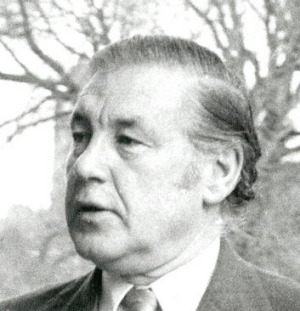
The 1976 Victorian state election, held on Saturday, 20 March 1976, was for the 47th Parliament of Victoria. It was held in the Australian state of Victoria to elect 81 members of the state's Legislative Assembly and 22 members of the 44-member Legislative Council. Since the previous election, there was an increase in the number of members of the Legislative Assembly by 8 and in the number of Council members by 8, though only 4 were elected at the 1976 election.

The 2017 Western Australian state election was held on Saturday 11 March 2017 to elect members to the Parliament of Western Australia, including all 59 seats in the Legislative Assembly and all 36 seats in the Legislative Council. The eight-and-a-half-year two-term incumbent Liberal–WA National government, led by Premier Colin Barnett, was defeated in a landslide by the Labor opposition, led by Opposition Leader Mark McGowan.
References
- ↑ Black, David (1991). Legislative Council of Western Australia: membership register, electoral law and statistics 1890-1989. Perth, WA: Western Australian Parliamentary History Project. ISBN 0730936414.